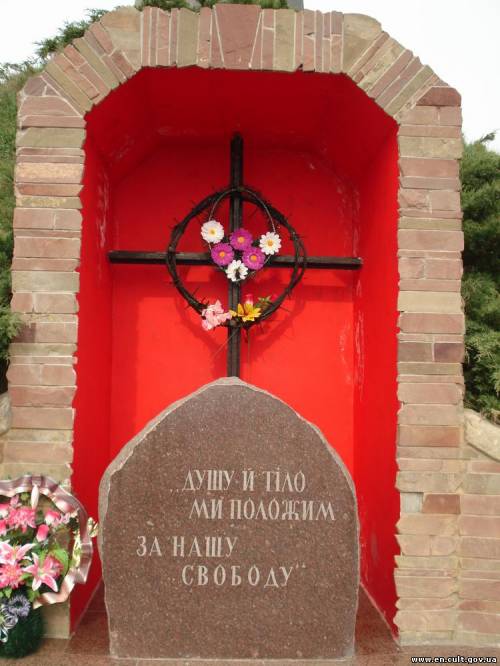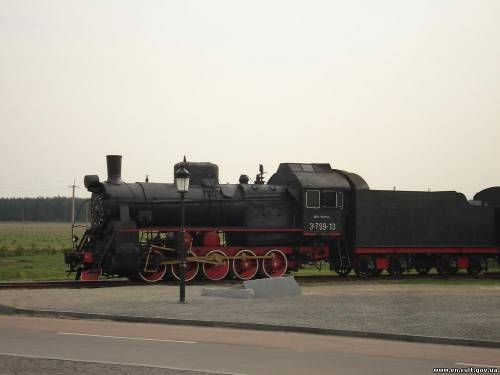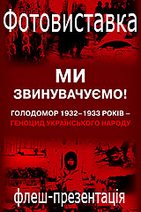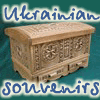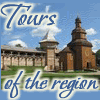
The Kruty Heroes memorial complex has been created on the basis of the battle of the Ukrainian People's Republic's armed formations with the troops of the Bolshevik Russia on January 29, 1918 near the Borzna district railway station in the Chernihiv region.
The idea to eternalize the memory of the fallen near Kruty which is, in fact, one of the first armed conflicts of the independent Ukrainian state with the Bolshevik aggressors, appeared in the early 1990s. This was spearheaded by the People's Movement of Ukraine, the Ukrainian student union, and a number of other public and political organizations with the national democratic orientation. The first memorial sign representing a birch cross crowned with a barbed wire wreath was installed in January 1991 by the representatives of the national democratic forces of the Cherhihiv, Sumy and Kyiv regions. Over the years of independence the wooden cross was replaced with a high burial hill with a metal cross atop.
In summer 2006, with assistance of the President of Ukraine, an open monument was solemnly opened representing a column being a copy of on of the columns of the Main building of the St. Volodymyr Kyiv University. The column is crowned with a bronze trident. The author of the monument is the People's Artist of Ukraine, our fellow countryman, Anatoliy Haydamaka.
He is also the author of the idea of creation of the Kruty Heroes memorial museum in railway carriages. He derived it from the Ukrainian historians' assessment of that period as a weird, "echelon" war: troops were concentrated alongside railways and consequently the warfare took place in the same way.
A Kyiv railway platform of the early XX century was reproduced across the road from the monument.
Railways at both sides of the platform I accommodate seven carriages and a flat-car with a cannon. The latter is intended to reproduce a self-made armoured train of the Ukrainian defenders.
A carriage in the first hall of the exposition contains copies of documents andpicturesdepicting pre-revolutionary Kyiv, the Ukrainian movement of the early XX century, the World War I realia, key events of the 1917 Ukrainian revolution and rise of Ukrainian national identity the declaration of the Ukrainian People's Republic.
The second carriage offers exposition covering political events which lead to the soviet Russia's aggression against the UPR, the creation of the Ukrainian Armed Forces, and the beginning of the UPR's armed struggle for independence. Topically the hall is divided into two parts: left-hand is Ukrainian; right-hand is Bolshevik depicting aggressor. The carriage itself is a museum exhibit since it was intended for decontamination. The fighters called such carnages "lice-exterminators".
From the second exhibition hall via vestibule we pass to the third carriage-hall, The exhibition covers the battle of Kruty on January 29, 1918 and the associated events, consequences and meanings: the Bolshevik mutiny in Kyiv known as the 'January rebellion at the "Arsenal" factory" of the Ukrainian defenders and aggressors, the importance of the Kruty resistance in the course of war, atrocities of M.A. Muravyov's troops in the country and execution of the captured Ukrainian patriotic youth.
The materials of the fourth carriage are dedicated to Ukraine's further struggle for independence during the Ukrainian revolution (1918-1921): The Ukrainian state, UPR during the Directory rule, WUPR. It also contains documentary evidence that the Kruty heroes were an example for the following generations of Ukrainian patriots.
